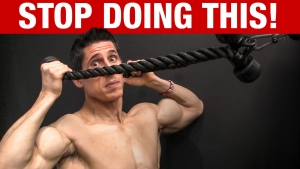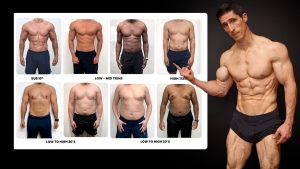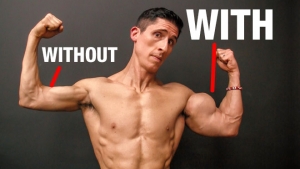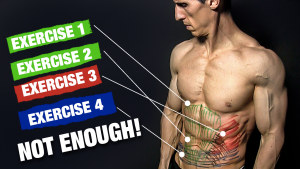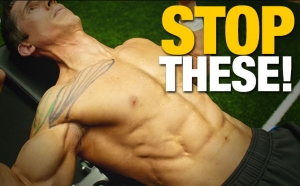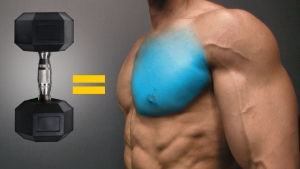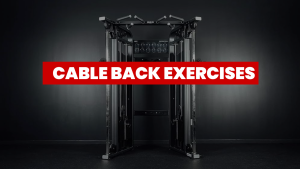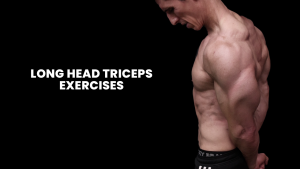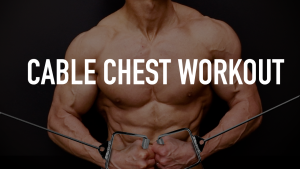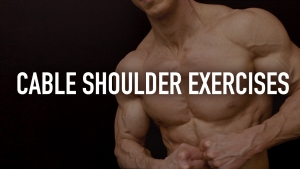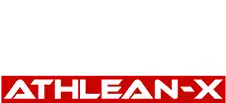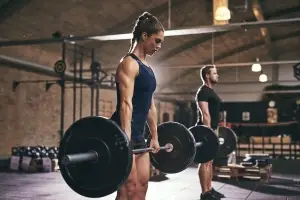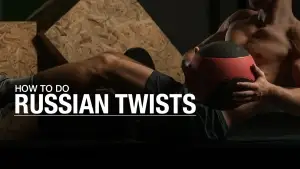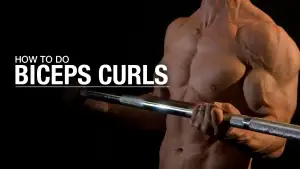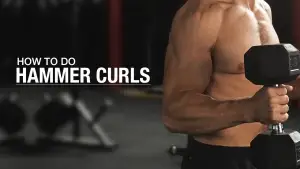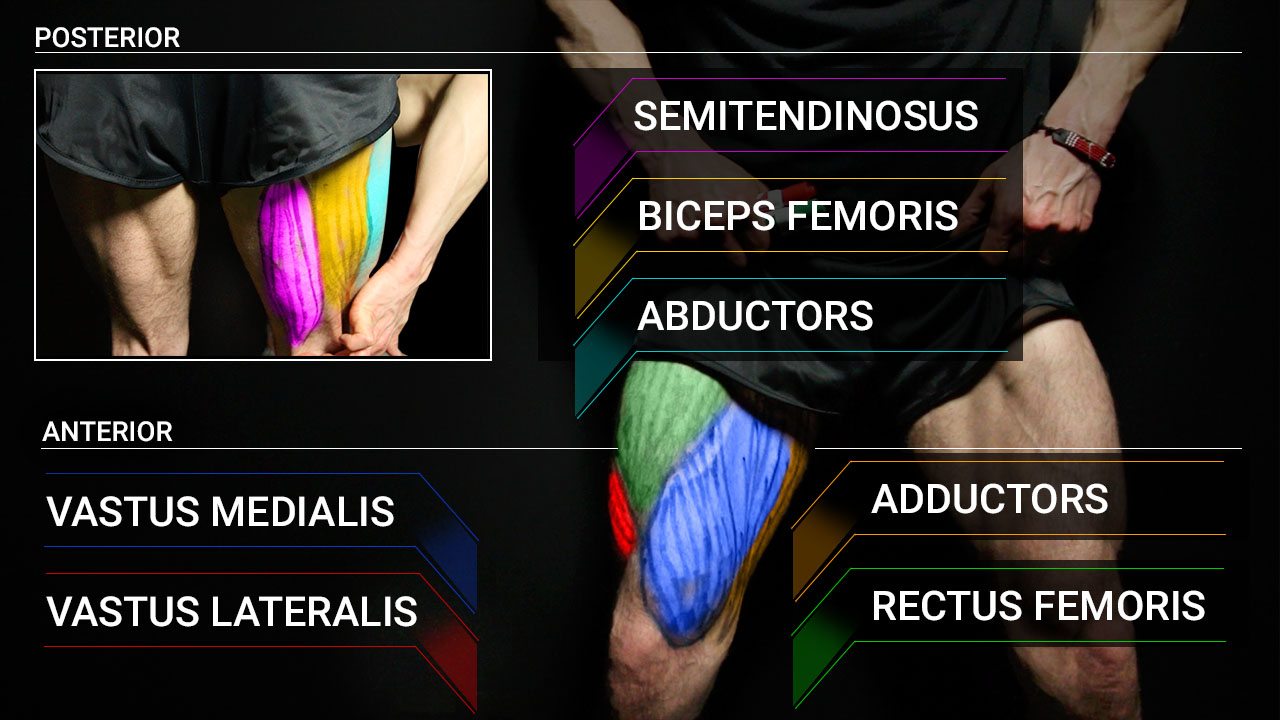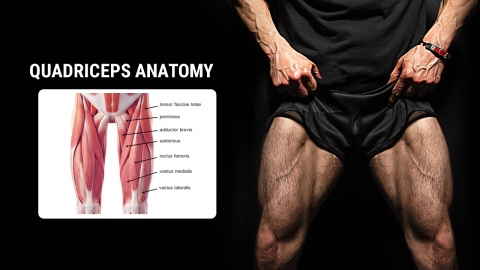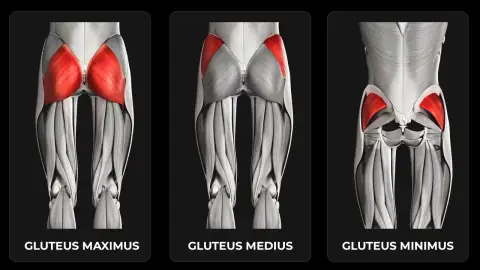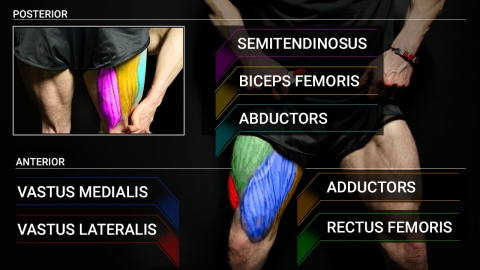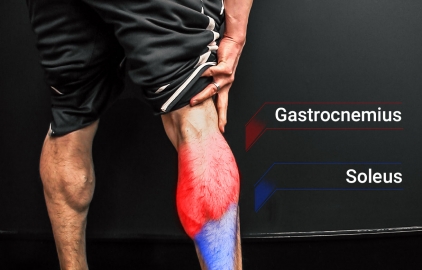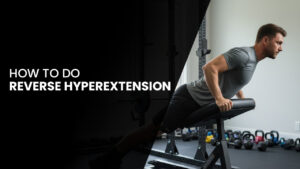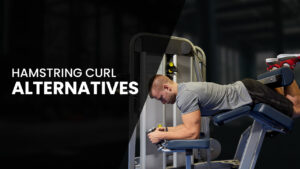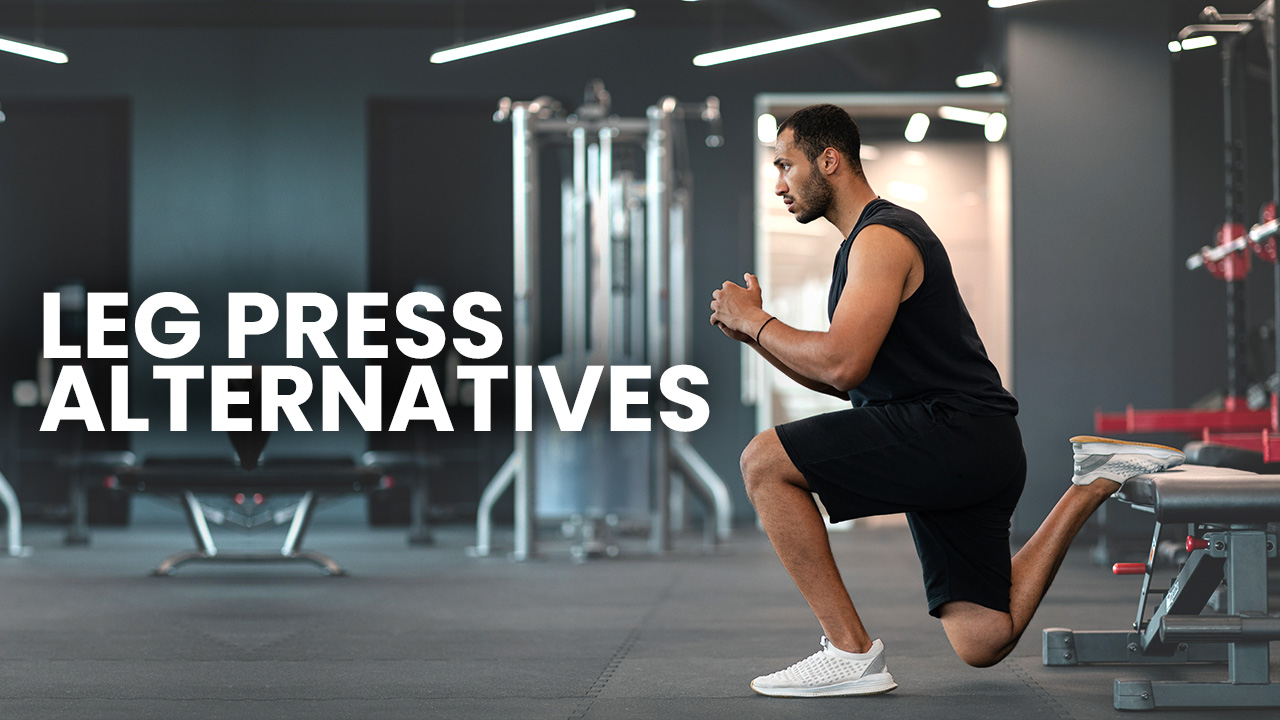
WHY not leg presses?
Load it up, push some plates, and you’ll walk away with a pumped-up feeling that makes you think you’re building massive, muscular legs.
The problem is that “strength” doesn’t always translate once you leave the machine.
The Machine Leg Press locks you into an artificial path of motion, gives you stability you didn’t earn, and piles on weight your joints might not actually be ready to handle.
It feels productive in the moment, but over time, it can create imbalances, strain your back, and limit the athleticism you’re supposed to be training for.
While the Leg Press may be the easy answer for leg day, it might not be the best answer.
Thankfully, there are smarter ways to train your legs.
Let’s take a look at the muscles that are worked during a Leg Press, why the Leg Press might not be worth the trouble, and 9 of the best leg press alternatives you can do in your commercial or home gym.
LEG PRESS: MUSCLES WORKED
When most people think of the Leg Press machine, they picture one thing: quads on fire.
And while the quadriceps are definitely the prime movers here, they’re not the only muscles involved. Every press recruits a team of lower-body muscles working together to move the weight.
The problem is that the machine changes the muscle engagement, especially in the posterior chain.
Instead of stabilizing, balancing, and coordinating like they would during free-weight Barbell Squats, Bulgarian Split Squats, or Sumo Squats, they’re locked into a fixed path.
To really understand what the Leg Press and Single-Leg Press does, we need to break down the specific muscles at work and how they function in this movement.
QUADRICEPS
The quadriceps sit at the front of the thigh and are made up of four muscles: the rectus femoris, vastus lateralis, vastus medialis, and vastus intermedius.
Their primary job is to extend the knee, while the rectus femoris also helps with hip flexion.
On the Leg Press machine, the quads take center stage. They’re responsible for driving the platform away by straightening the knees, making them the main source of power during the movement.
This is exactly why lifters love piling on plates. The Leg Press delivers a massive quad pump that feels like progress.
Foot placement can shift the emphasis even further; setting the feet lower on the platform puts even more stress on the quads and turns them into the undisputed star of the exercise.
GLUTES
The glutes, located at the back of the hips and driven primarily by the gluteus maximus, play a secondary but important role in the Leg Press.
Their main job is to extend and externally rotate the hip while also stabilizing the pelvis.
During a deep press, as the knees bend and the hips flex, the glutes fire hard to extend the hips and drive the weight back up.
Adjusting foot placement can increase their involvement. Placing the feet higher on the platform shifts more of the load to the glutes, making the exercise feel closer to a Belt Squat or a Deep Barbell Squat.
However, because the Leg Press machine provides all the stability, the glutes aren’t challenged the same way they are in free-weight movements or bodyweight exercises like Box Jumps.
HAMSTRINGS
The hamstrings, located at the back of the thigh, run from the hip down to below the knee.
Their primary functions are to flex the knee and extend the hip, making them an essential muscle group for lower-body strength and movement.
On the Leg Press, however, their role is more supportive than dominant.
Because the quadriceps are responsible for extending the knees and driving most of the movement, the hamstrings aren’t the main drivers here.
Instead, they step in to assist with hip extension as the sled moves upward, particularly when the feet are placed higher or wider on the platform.
While they are engaged during the exercise, their involvement is limited compared to more hamstring-focused movements like Romanian Deadlifts or even simple Bodyweight Squats, where they are required to contribute far more actively.
CALVES
The calves, made up of the gastrocnemius and soleus muscles at the back of the lower leg, act primarily as stabilizers during the Leg Press.
Their main function is to plantarflex the ankle or point the toes downward while also helping to stabilize the knee joint.
On the Leg Press, most people don’t realize the calves are working, but they play a subtle role in keeping the ankle steady and assisting with knee lockout at the top of the movement.
Some lifters even cut the range of motion short to push more through the calves at the end, but this is a poor substitute for direct calf training.
Compared to dynamic, athletic movements like Broad Jumps or Band Squats, the calves on the Leg Press are limited to a supporting role rather than being true power producers.
WHY THE LEG PRESS MIGHT NOT BE THE BEST OPTION
The Leg Press machine is a gym favorite because it feels safe, lets you move big weight, and delivers a pump you can feel instantly.
But just because something feels effective doesn’t mean it’s the best choice for building strength that lasts.
In fact, the Leg Press comes with several downsides that you can’t ignore if your goal is to train like an athlete.
FIXED PATH PROBLEM
Every rep on the Leg Press follows the same, locked-in track. That might sound like a good thing, but your body doesn’t move this way outside the machine.
When you squat, lunge, or jump, your joints adjust naturally to stabilize the movement in multiple planes.
That stability demand is what makes those exercises so athletic and so effective.
On the Leg Press, the machine provides that stability for you, meaning the small stabilizing muscles around the hips, knees, and ankles don’t get trained.
Over time, this can create strength imbalances and leave you strong only in one very artificial pattern.
SPINAL COMPRESSION
Many lifters love the Leg Press because they can throw on more plates than they’d ever squat.
The problem is that all that load doesn’t magically disappear. It gets transferred straight into your spine.
With your lower back pinned against the pad, heavy weight pushes the lumbar spine into compression, especially at the bottom of the rep.
Spinal loading can aggravate discs and create long-term back issues.
In contrast, movements like the Barbell Squat or Safety Bar Squat let your core engage to brace the spine naturally, distributing force the way your body is designed to handle it.
On the Leg Press, you get spinal load while your core takes a nap.
KNEE MECHANICS
Foot placement on the sled changes muscle emphasis, but it also creates potential problems for the knees.
A low stance puts the knees into deep flexion under maximum load, which can stress the joint surfaces and connective tissue.
A high stance reduces quad involvement but forces the hips and lower back to pick up more of the load.
Go too wide, and you may torque the knee stress into unnatural angles they aren’t designed for.
Unlike a free-weight movement such as a Goblet Squat or Trap Bar Squat, where your body naturally adjusts to find a comfortable groove, the Leg Press locks your knees into the track whether it fits your structure or not.
CARRYOVER ISSUE
This is the biggest problem of all: what you build on the Leg Press often doesn’t carry over to anything outside the machine.
Pushing weight while lying back doesn’t make you better at standing, squatting, running, or jumping.
The Leg Press removes balance, coordination, and stability, which are the exact qualities you need for athletic performance.
That’s why someone who brags about leg pressing 600 pounds can still struggle with a clean Front Squat or even some bodyweight exercises.
If you want to train like an athlete, you need movements that work in three dimensions, not just a seat with a sled.
WHAT TO DO INSTEAD: 9 LEG PRESS ALTERNATIVES
You don’t need the Leg Press machine to build big, powerful legs.
Each of the following exercises delivers the same benefits including quad strength, hypertrophy, and overall leg development, but without the downsides of being locked into a machine.
Even better, they carry over to sports, daily movement, and real-world performance.
Here are the best 9 Leg Press alternatives you can start performing in your leg day workout routine:
BARBELL BACK SQUAT

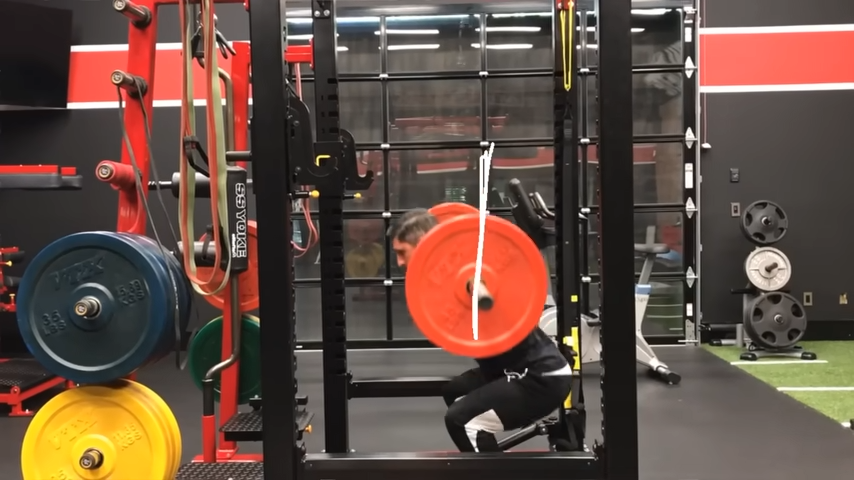
HOW TO DO THE BARBELL BACK SQUAT:
- Start by setting a barbell on the hooks of a squat rack at about upper-chest height.
- Step under the bar so it rests comfortably across the top of your traps (not your neck), then grip the bar just outside shoulder width.
- Pull your shoulder blades together, brace your core, and lift the bar out of the rack by standing tall.
- Take one or two controlled steps back to set your stance with your feet roughly shoulder-width apart, toes pointed slightly out.
- From here, initiate the movement by pushing your hips back slightly as you bend your knees, lowering yourself as if you’re sitting between your legs.
- Keep your chest tall and your back flat, with your elbows pointing down to help maintain bar position.
- Descend until your thighs are at least parallel to the ground (or deeper, if mobility allows).
- At the bottom, pause briefly, then drive through your heels and midfoot to return to standing, squeezing your glutes as you lock out at the top.
WHAT MAKES IT EFFECTIVE: The Back Squat is the king of leg exercises because it recruits multiple muscle groups and forces them to work together. Unlike the Leg Press machine, which fixes you into a single track, the squat builds stability, coordination, and balance that carry over to real-world movement and sport.
front squat

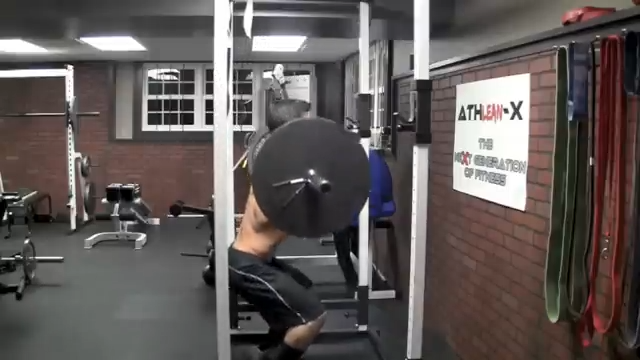
HOW TO DO THE FRONT SQUAT:
- Set a barbell on a squat rack at about chest height. Step up to the bar and use a clean grip, placing your fingertips under the bar with your elbows lifted high and parallel to the ground.
- If mobility is an issue, you can loop wrist straps around the bar to create handles, which makes it easier to maintain position. The bar should rest on your front delts, not your hands.
- Unrack the weight by standing tall and stepping back carefully. Position your feet about shoulder-width apart, toes slightly turned out.
- Take a deep breath, brace your core, and keep your chest tall.
- Begin the movement by sitting your hips down and back, lowering under control while keeping your elbows high to prevent your torso from collapsing forward.
- Descend until your thighs are at least parallel to the ground, or deeper if your mobility allows.
- From the bottom, drive through your heels and midfoot to return to standing, maintaining a tall chest and tight core.
- Avoid letting your knees cave in, your elbows drop, or your heels come off the ground.
- Throughout the set, focus on feeling the quads and glutes powering you up while your abs and spinal erectors stabilize the torso.
WHAT MAKES IT EFFECTIVE: Barbell or Dumbbell Front Squats are one of the most powerful Leg Press alternatives because it forces an upright torso, which shifts more load onto the quads while also heavily engaging the core. Unlike the Hack Squat machine or Smith Machine Squats, which keep you locked in place, the Front Squat requires balance, coordination, and full-body control. It also reduces spinal compression compared to the Back Squat, making it friendlier for those with upper back and lower back issues.
GOBLET SQUAT

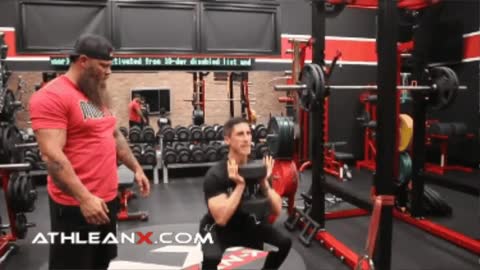
HOW TO DO THE GOBLET SQUAT:
- Grab a dumbbell and hold it vertically by one end, cupping your hands around the top and keeping it tight to your chest.
- This “goblet” position brings the load into your center of mass, making balance and control much easier compared to barbell variations.
- Stand with your feet about shoulder-width apart, toes turned slightly out and brace your core.
- From here, sit your hips back and down as if lowering into a chair while keeping your chest tall and elbows inside your knees.
- Descend until your hips drop below parallel, going as deep as your mobility allows, while making sure your knees track over your toes.
- Keep the dumbbell close to your body the entire time to stay upright.
- At the bottom, pause briefly, then drive through your heels and midfoot to return to standing.
- Maintain tension in your core and avoid letting the knees cave in.
WHAT MAKES IT EFFECTIVE: The Goblet Squat teaches proper squat mechanics, opens the hips, and helps you achieve greater depth without the technical challenges of a barbell. Because the load stays in front, it reduces spinal stress while still hammering the quads and glutes. Compared to machine-based Leg Press alternatives like the Resistance Band Leg Press or Hack Squats, the Goblet Squat forces you to stabilize and engage your core, which are skills that carry over to more advanced lifts. It’s also a safer learning tool than jumping straight into complex moves like Pistol Squats or overly restrictive options like Sissy Squats.
BULGARIAN SPLIT SQUAT

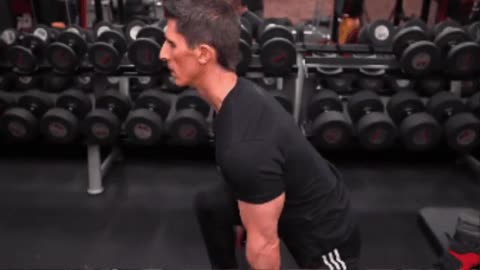
HOW TO DO THE BULGARIAN SPLIT SQUAT:
- Stand about two feet in front of a sturdy bench or box and place the top of one foot behind you on it.
- Hold a pair of dumbbells at your sides or use just body weight if you’re new to the movement.
- From here, brace your core, keep your chest upright, and begin lowering your back knee toward the floor by bending your front leg.
- Make sure your front knee tracks directly over your ankle, not caving in or pushing too far forward.
- Descend until your front thigh is nearly parallel to the ground and you feel a deep stretch in the hip flexor of the rear leg.
- At the bottom, pause briefly, then drive back up through the heel of your front foot, squeezing your glute as you rise.
- Repeat for reps on one side before switching legs. To increase intensity, you can slow the tempo, pause at the bottom, or load up with heavier dumbbells.
WHAT MAKES IT EFFECTIVE: Unlike machine-based options like a Belt Squat machine, the Bulgarian Split Squat doesn’t hold you in place. You have to stabilize every rep on your own. This builds not just quad and glute size, but also balance and coordination, which are crucial for athletic carryover. Compared to simpler patterns like Dumbbell Squats or static positions such as the Spanish Squat or Resistance Band Squat, this variation demands far more control through multiple planes of motion.
WIDE STANCE WALKING LUNGES

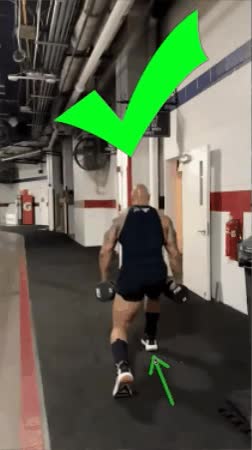
HOW TO DO WIDE STANCE WALKING LUNGES:
- Stand tall with your feet hip-width apart and your core braced.
- Take a long step forward with your right foot, but instead of staying on a narrow line, step slightly out to the side. This wider base gives you more stability and reduces wobbling.
- Lower yourself under control until your right thigh is parallel to the ground and your left knee hovers just above the floor.
- Make sure your front knee stays lined up with your toes, not caving inward or drifting too far forward. Keep your chest tall, shoulders back, and core engaged the entire time.
- Push hard through your right heel to rise up and bring your left foot forward into the next step, again planting it slightly wide.
- Continue alternating legs in a smooth, steady rhythm, focusing on maintaining posture and balance.
WHAT MAKES IT EFFECTIVE: The Wide Stance Walking Lunge is brutal on the legs, but in a good way. By stepping slightly off to the side, you take some of the balance challenge out of the movement while still hammering the quads, glutes, hamstrings, and even the inner thighs. This makes it a joint-friendly choice for anyone with healthy knees who wants to load up the lower body without feeling like they’re walking a tightrope.
DUMBBELL STEP-UP

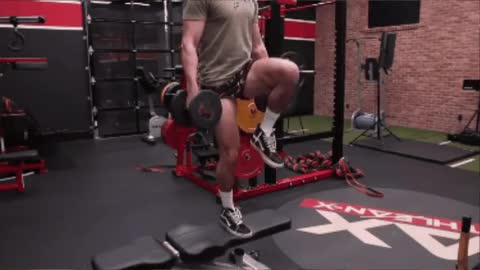
HOW TO DO THE DUMBBELL STEP-UP:
- Grab a pair of dumbbells that you can control without sacrificing form.
- Stand tall in front of a sturdy bench or box set at a height where your knee bends about 90 degrees when your foot is on top.
- Hold the dumbbells at your sides with arms straight and core braced.
- Place one foot fully on the bench and drive hard through your heel to lift your body up. Bring the trailing leg up under control until both feet meet on the surface.
- Keep your chest upright, shoulders back, and abs tight to stay stable.
- Step down carefully with the same trailing leg you brought up, then return to the start position.
WHAT MAKES IT EFFECTIVE: The Dumbbell Step-Up is a deceptively simple movement that delivers a massive payoff. It overloads the quads while forcing balance, hip stability, and single-leg strength in a way the leg press machine never can. Each rep mimics real-world patterns including climbing stairs, sprinting, and jumping, making it highly functional for athletes.
BELT SQUATS

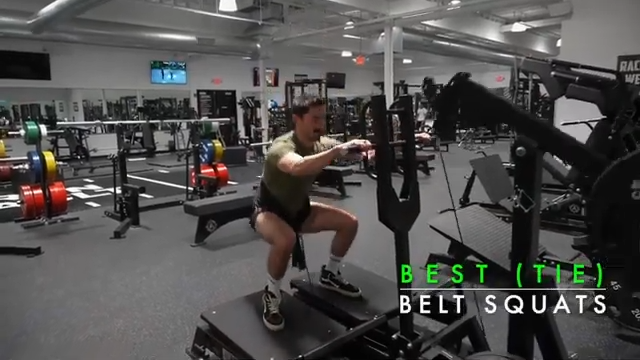
HOW TO DO THE BELT SQUAT:
- Strap on a weight belt and clip the chain or strap to the load.
- Step onto the platform of a Belt Squat machine so the weight hangs directly beneath your hips.
- Set your feet shoulder-width apart, toes slightly out, and brace your core.
- From here, squat down by bending at the knees and hips, keeping your chest tall and your torso upright.
- Descend until your thighs are at least parallel to the floor, making sure your knees track in line with your toes.
- At the bottom, pause briefly, then drive through your heels to stand back up tall.
- Keep your core tight and avoid letting your back round. The belt should take the load, not your spine.
WHAT MAKES IT EFFECTIVE: The Belt Squat is one of the best Leg Press alternatives because it allows you to heavily load your legs without dumping stress onto your lower back. It mimics the movement of a Traditional Squat but removes the spinal compression you’d get from a barbell on your shoulders. That makes it especially valuable for athletes dealing with back or joint pain and lifters who want to push heavy without beating up their spine.
SLED PUSH/PULL

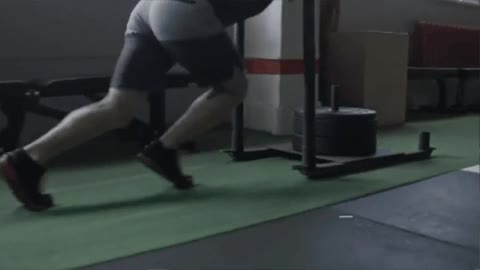
HOW TO DO THE SLED PUSH/PULL:
- Load the sled with a weight that challenges you but still allows you to move explosively.
- For the push, place your hands on the sled at chest height, arms slightly bent, and lean into it so your body forms a straight line from head to heels.
- Brace your core and drive forward with powerful strides, pushing through the balls of your feet.
- Keep your chest down, hips low, and maintain a steady, aggressive pace until you reach the target distance.
- For the pull, attach a rope, strap, or harness to the sled. Face away from it and lean back slightly as you walk or run backward, pulling the load toward you.
- Keep your knees bent, chest up, and step with control. Every stride should feel strong and deliberate.
WHAT MAKES IT EFFECTIVE: Few resistance exercises build functional leg power like the sled. It hammers your quads, glutes, and hamstrings without putting unnecessary stress on your joints or spine. Because there’s no eccentric portion (lowering), you can train it with high volume and recover faster, which is why athletes use it to build size, strength, and conditioning all at once. The sled teaches you to generate force in the exact way it’s needed on the field: driving forward or pushing against resistance while moving.
HACK SQUAT

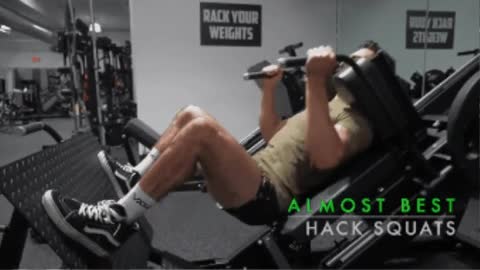
HOW TO DO HACK SQUAT:
- Set the Hack Squat machine up so the shoulder pads sit comfortably on top of your traps, and your back is fully supported against the pad.
- Step onto the footplate with your feet about shoulder-width apart, toes turned slightly out. Brace your core and unlock the machine’s safety handles.
- Begin the movement by bending at the knees and hips, sliding down the track under control.
- Keep your back and head pressed firmly into the pad, and lower until your thighs are at least parallel to the floor.
- At the bottom, pause briefly, then drive hard through your heels to extend your legs and push yourself back up.
- Don’t let your knees collapse inward and avoid locking them out at the top. Keep tension on the quads throughout the set.
WHAT MAKES IT EFFECTIVE: The Hack Squat machine allows you to train with heavy loads while maintaining an upright torso, which puts the quads under maximum tension. The angled footplate also gives you room for dorsiflexion, helping you hit deeper ranges than many lifters can achieve with a barbell. While it doesn’t demand the same stability as a free-weight squat, it’s one of the most effective machine-based options for hammering the quads safely and with intensity.
HOW TO PROGRAM LEG PRESS ALTERNATIVES
Knowing the best Leg Press alternatives is just the first step. Now, it comes down to how you structure them into your program.
The goal isn’t to randomly swap in an exercise here or there. It’s to use these movements in a way that matches your goals and training level while keeping your joints healthy and your performance improving.
Here’s how to make it work for you and your goals:
HYPERTROPHY FOCUS (MUSCLE GROWTH)
If your primary goal is bigger quads, you’ll want to lean heavily on quad-dominant lifts that allow for progressive overload.
Start with a heavy bilateral movement like the Barbell Back Squat or Front Squat to build your base.
From there, move into a unilateral option such as the Bulgarian Split Squat or Dumbbell Step-Ups. These torch the quads while also making sure one leg isn’t lagging behind the other.
To finish, add a volume-based movement like Walking Lunges or the Hack Squat Machine for higher reps.
The key here is to hit the quads from multiple angles while piling on enough volume to stimulate growth.
Think heavy sets of 5 to 8 reps on Squats, moderate sets of 8 to 12 on Split Squats or Step-Ups, and then 12 to 20 rep “burnouts” with Lunges.
This blend of intensity and volume will give you both the overload and the metabolic stress needed to grow.
ATHLETIC FOCUS (STRENGTH + PERFORMANCE)
If you’re training to move better, not just look better, your programming should look different.
Athletic strength isn’t built on machines. It’s built on movements that challenge balance, coordination, and explosiveness.
Start your session with a heavy bilateral strength lift like the front squat or belt squat, focusing on crisp reps with perfect form.
Then, shift into single leg work such as Bulgarian Split Squats, Walking Lunges, or Step-Ups, which build strength in each leg independently while improving hip stability.
To finish, add power and conditioning with Sled Pushes or Drags. These are joint-friendly and replicate the exact forward drive your legs need in sport.
Pair this with jumps like Broad Jumps or Squat Jumps, if you want to maximize explosive carryover.
BEGINNER-FRIENDLY
If you’re new to leg training, you don’t need to jump into Barbell Squats or Heavy Split Squats right away.
Instead, start with movements that teach you proper mechanics without overwhelming you.
The Goblet Squat is the perfect entry point because it forces you to keep the weight close to your center of gravity and naturally helps you sit deeper into the squat.
Pair this with Step-Ups to build single-leg strength safely and add Walking Lunges to improve balance and coordination.
Keep the loads light to start. Focus on technique, depth, and control.
Once you can consistently perform 3 sets of 10 to 12 perfect reps, you’ll be ready to progress to heavier lifts like the Barbell Squat or more advanced variations like Bulgarian Split Squats.
The goal for beginners isn’t to chase heavy numbers. It’s to master form and set a foundation for long-term progress.
MIX BILATERAL AND UNILATERAL
The biggest programming mistake most lifters make is sticking exclusively to bilateral lifts or, on the flip side, doing only unilateral accessory work. You need both.
Bilateral lifts such as the Barbell Back Squat, Front Squat, or Belt Squat allow you to load heavy and build total lower-body mass. These are your strength and size builders.
But unilateral lifts like Bulgarian Split Squats, Lunges, and Step-Ups correct imbalances, improve stability, and build athletic carryover.
They force each leg to do its fair share of the work, which is something the leg press never demands.
When you combine the two, you not only grow bigger legs, but you also build stronger, more stable joints and a body that performs better in every direction.
The Leg Press makes you feel strong, but it’s strength that stops the second you step off the machine.
Real progress comes from movements that demand balance, stability, and control.
Trade the Leg Press machine for smarter choices, and you’ll build legs that look powerful and perform when it counts.
Check out our complete line of ATHLEAN-RX Supplements and find the best training program for you based on your fitness level and goals.
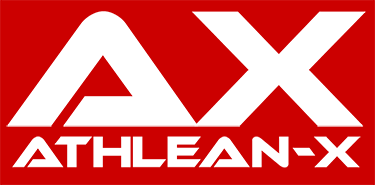
- The Leg Press machine locks you into a fixed path that doesn’t exist outside the gym, loads your spine more than it builds real strength, and delivers a pump with almost no carryover to sports, running, or real-world movement.
- That’s why you need smarter movements that build size, strength, and athletic performance. Here are the 9 best Leg Press alternatives:
- The Barbell Back Squat is a total leg builder that hits the quads, glutes, and hamstrings together.
- An upright torso during a Front Squat shifts the focus onto the quads and spares your spine.
- The Goblet Squat is perfect for learning proper squat mechanics and depth.
- Bulgarian Split Squats require and develop unilateral strength and balance.
- Walking Lunges are functional, athletic, and builds coordination step by step.
- Dumbbell Step-Ups offer single-leg strength with carryover to running and jumping.
- Belt Squats provide heavy quad loading without beating up your lower back.
- You can build explosive drive and endurance in a joint-friendly way with the Sled Push/Drag.
- Get a quad-dominant overload with a more natural squat pattern when you perform the Hack Squat.
LEG PRESS ALTERNATIVES FAQ
A good substitute for the Leg Press is any movement that targets the quads, glutes, and hamstrings but does so in a way that builds strength you can use outside the gym.
The problem with the Leg Press machine is that it locks you into a fixed path, provides stability for you, and overloads your spine while making you feel strong.
Real substitutes like the Barbell Back Squat, Front Squat, Bulgarian Split Squat, Step-Ups, or even the Belt Squat machine give you all the same muscle activation with the added benefit of balance, core stability, and coordination.
These lifts force your body to work as a system, which means the strength you gain carries over to sports, running, jumping, and everyday movement.
For my money, here are 9 of the best Leg Press alternatives:
- Barbell Back Squat
- Front Squat
- Goblet Squat
- Bulgarian Split Squats
- Walking Lunges
- Dumbbell Step-Ups
- Belt Squats
- Sled Push/Drag
- Hack Squat
Technically, yes. You can lie on your back, hold a pair of dumbbells with your feet, and push them away to mimic the motion of a Leg Press.
But in practice, this is more of a circus trick than a real training option.
It’s awkward, unsafe if the dumbbells slip, and doesn’t allow you to load the movement the way you need to for real progress.
If you’ve only got dumbbells, there are much smarter choices: Dumbbell Squats, Step-Ups, Walking Lunges, and even Bulgarian Split Squats will give you the same quad-dominant stimulus in a safer, more functional training way.
These exercises also challenge your core and balance, something a Dumbbell Leg Press never will.
While you can try to press dumbbells with your feet, you’ll be better off training like an athlete and sticking to movements that are designed to build strength.
Growing quads without the Leg Press is not only possible but it’s smarter. The quads respond best to deep knee flexion, which you can get from exercises like the Front Squat, Goblet Squat, and Hack Squat. Add in unilateral moves like Bulgarian Split Squats and Step-Ups, and you’ll not only build size but also fix strength imbalances between legs. High-rep finishers like Walking Lunges or Pause Squats can give you the same burn you chase on the sled, but with far more athletic carryover. Be sure to focus on progressive overload. In other words, add resistance weight, reps, or tempo challenges over time. If you train smart and consistently, your quads will grow, and no Leg Press machine is required.
REFERENCES
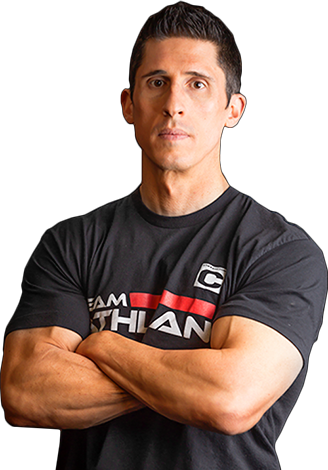
Jeff Cavaliere M.S.P.T, CSCS
Jeff Cavaliere is a Physical Therapist, Strength Coach and creator of the ATHLEAN-X Training Programs and ATHLEAN-Rx Supplements. He has a Masters in Physical Therapy (MSPT) and has worked as Head Physical Therapist for the New York Mets, as well as training many elite professional athletes in Major League Baseball, NFL, MMA and professional wrestling. His programs produce “next level” achievements in muscle size, strength and performance for professional athletes and anyone looking to build a muscular athletic physique.
